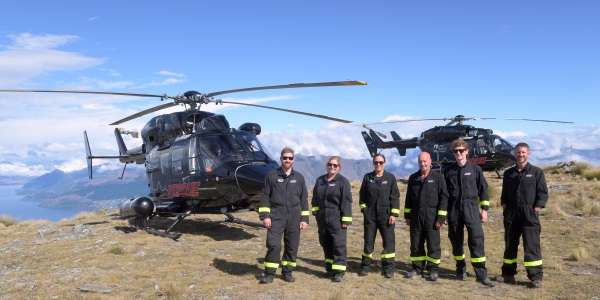It’s a game-changer.
Last week, a second dedicated rescue helicopter arrived in Queenstown, bolstering Helicopter Otago’s fleet across the South to five.
The BK117’s arrival also means increased highly-skilled aviation medical staff on the ground in the resort — there are now 10 paramedics, including winchmen, and five pilots assigned to the Basin’s two rescue choppers.
Heli Otago CEO Graeme Gale says, in another first for Queenstown, it’s also the start of having instrument flight rules, or IFR, capability, meaning the pilots can fly in cloud, at night, on designed and certified routes, with approaches in and out of hospital.
‘‘It allows us to do a lot more missions [than] we could ever do before.
‘‘It’s a very, very big deal.’’
He notes, though, fog will continue to be a limiting factor — ‘‘no one can fly, legally, in fog’’.
Queenstown’s Lakes District Air Rescue Trust (LDART) chair Jules Tapper believes the arrival of the second chopper and development of IFR means the resort’s now home to a ‘‘world-class service … which is as good, if not better, than anything else in the world’’.
Gale says the investment’s driven by the increased number of missions the rescue choppers are flying throughout the Queenstown-Lakes and Central Otago.
That’s in part due to tourism returning, the population increasing and more people exploring the backcountry or enjoying recreational pursuits which, inevitably, have an element of risk associated.
They’re also getting more calls for medical events, requiring patients to be moved to ‘‘definitive care’’ in Invercargill, Dunedin or Christchurch quickly.
‘‘We have neurosurgery in Dunedin about a third of the time, the rest of the time, if you’re needing neurosurgery or if you’re destined for a clot retrieval, with stroke, when we pick you up, your next destination’s going to be Christchurch,’’ Gale says.
‘‘They’ve got what they call clinical pathways — heart attacks, strokes … burns patients, spinal patients — they’ve all got destination hospitals that specialise in those [areas], so we will end up flying to wherever we need to.
‘‘Hopefully, we’re that link between the community and the destination hospital where they’re going to get that definitive care and back to a quality of life in a faster timeframe than they’d normally have.’’
Gale’s particularly grateful to LDART and Dunedin’s Otago Southland Rescue Helicopter Trust, which pick up the shortfall from the government contract and help provide some of the life-saving equipment.
‘‘This wouldn’t be here if it wasn’t for both of those trusts.
‘‘I just can’t thank them, or the community … trusts, enough for what they’ve done.’’
Tapper says the two trusts raise about $1.5 million a year for the service.
The next big fundraiser’s the annual Westpac Chopper Ride, from Queenstown to Invercargill, on May 12.




